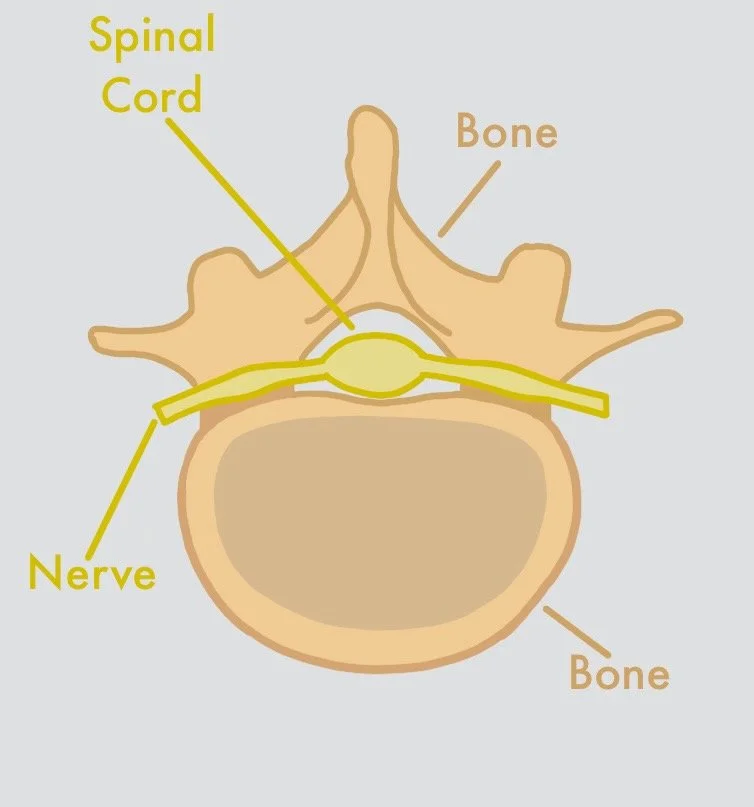Spinal Cord
Your spinal cord runs from the bottom of your head down to your tailbone. The spinal cord is like a highway, along which information travels from your brain to the rest of your body and vice versa.
The spinal cord is made up of cells called neurons. At each level of the spine, the spinal cord gives off nerve roots, which contain neurons that communicate with each other and other cells in the body.
Protecting the Spinal Cord
In addition to the spinal column, the spinal cord is also protected by the meninges and cerebrospinal fluid. The meninges are a thin layer of tissue that wraps around the spinal cord, sort of like a ziploc bag. Within the ziploc bag is fluid, called the cerebrospinal fluid, which flows around the spinal cord.
Spinal Cord Injury
Communication with the Body
Sometimes, the spinal cord can become injured, which is known as a spinal cord injury. The symptoms that a person with a spinal cord injury experiences depend on where the spinal cord is injured.
At each level, the spinal cord is responsible for sending information out to the body as well as to the rest of the spinal cord below it. If that communication is cut off due to injury, then no information can travel below that point in the spinal cord. This can result in people being unable to move or feel parts of their body, also known as paralysis.
Paraplegic: paralysis to the legs and lower body
If the injury occurs lower in the spinal cord, such as the thoracic or lumbar levels, a person may only have symptoms in their lower body. This can include difficulty moving and feeling the legs and feet.
Quadriplegic: paralysis to all four limbs
If the injury occurs high up in the spinal cord, such as the cervical level, a person may have symptoms in the arms, legs and chest. This can include difficulty moving and feeling the legs and arms, as well as an inability to hold their chest up.
The spine is organized into four major sections: cervical, thoracic, lumbar and sacral. These sections are further broken down into different levels. The cervical spine has seven levels, thoracic has 12, lumbar has five and sacral has five. At each level of the spine, the spinal cord gives off nerve roots, which travel to different tissues in the body.
The spinal cord travels from the brain down to the tail bone within a hollow space called the spinal canal. Surrounding the spinal canal is bone, also known as the spinal column, which protects the spinal cord from injury.
Each nerve root is responsible for communicating with different parts of the body, depending on the level they originate from:
The cervical spinal cord and nerve roots communicate with the upper body. These nerves are responsible for movement and sensation in the arms and hand.
The thoracic spinal cord and nerve communicate with the chest and upper back.
The lumbar spinal cord and nerves communicate with the low back and lower body. These nerves are responsible for movement and sensation in the legs.
The sacral nerves communicate with the tailbone.




